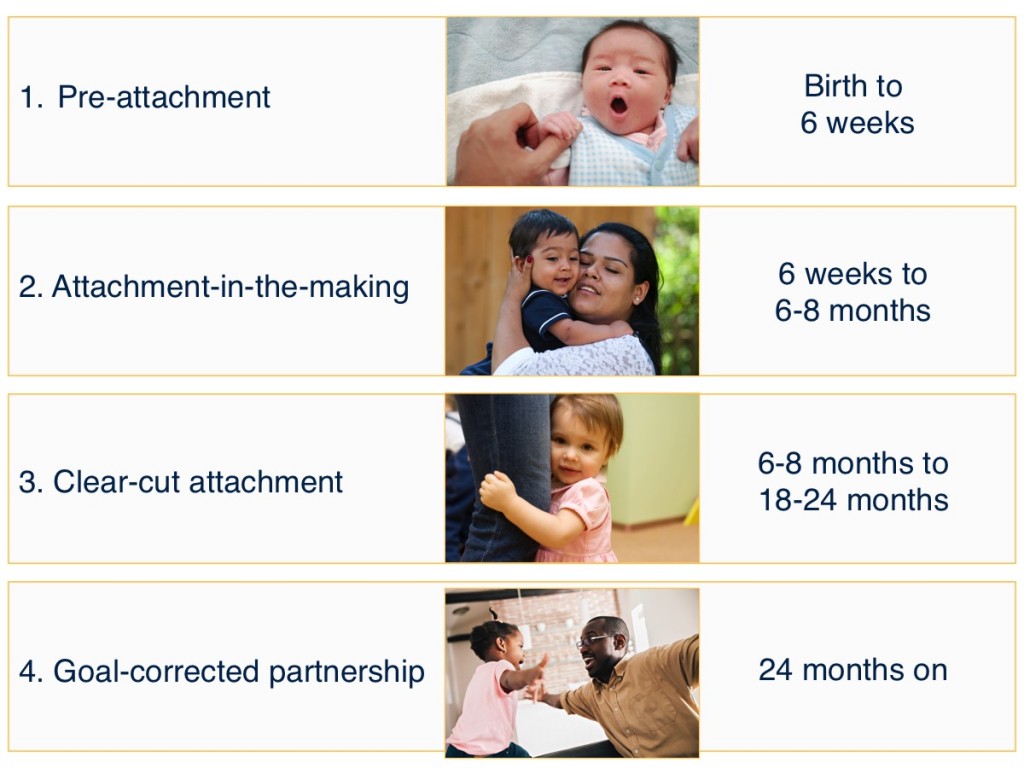
The development of attachment takes place in a series of phases. The first phase is called the pre-attachment phase. In this phase, newborns call caregivers to their side. They will cry or smile, which helps keep people close by. Infants may recognize their caregivers, but they do not show a preference for them over strangers. This phase lasts until about 6 weeks of age.
The next phase is called attachment-in-the-making. During this phase, infants show a preference for familiar people. They are more interactive with familiar people and are more easily comforted by them. But infants are still happy to spend some time with strangers. Infants are in this phase from approximately 6 weeks to 7 months of age.
The third phase is called clear-cut attachment. It lasts from around 7 months to around 18-24 months of age. Here, infants and toddlers show clear attachment to primary caregivers. They begin using their caregivers as a secure base. This means that when their secure base leaves, children become upset. You’ve probably seen a crying toddler cling to her mother during daycare drop off. Separation anxiety is a hallmark of this phase.
The final phase is the goal-corrected partnership. Children’s attachment bonds continue to evolve once they form clear attachments. Around age two, there is a change in children’s language and cognitive skills. They are now able to understand why their caregivers have left and that they will return. This understanding helps toddlers’ separation anxiety decline. Children no longer cry to protest their parent’s departure. Toddlers and preschoolers may instead negotiate or persuade parents to stay.
The quality of attachment relationships can vary from child to child. Child and family factors can affect attachment quality. These include infant characteristics, childcare, family situations, and family structure. How do you think these factors might affect attachment relationships?
-
- Attachment
- the lasting emotional bond that forms between infants and their primary caregivers
- Proximity maintenance
- a child stays close to an attachment figure for comfort and protection
- Safe haven
- an attachment figure provides comfort and safety when a child feels unsure
- Secure base
- an attachment figure’s presence gives a child the confidence to explore her environment
- Separation distress
- a child experiences stress or anxiety when an attachment figure leaves